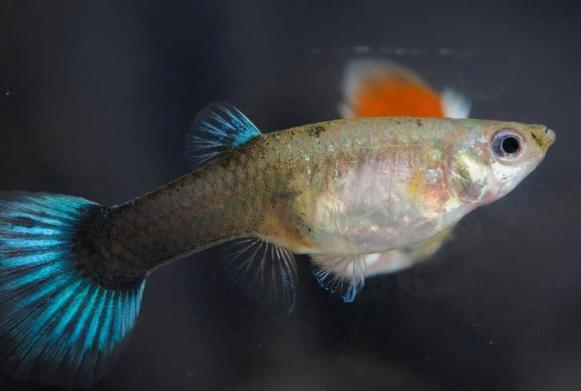The methods for dealing with the food residues of guppies mainly include physical cleaning, chemical cleaning, biological cleaning, and diet adjustment.

Physical Cleaning: This is one of the most commonly used cleaning methods. You can use a siphon or a net to clean up the feces and other residues at the bottom of the tank. The siphon can be directly replaced by a plastic tube. Insert it into the water, gently move it up and down, and suck out the feces and residues. For the net, you can use a fine-mesh net or a stocking. Place it at the bottom of the tank and then rinse it with a water flow to wash away the feces and residues.
Chemical Cleaning: Chemical agents such as nitrifying bacteria and yeast can be used to decompose the guppy feces and other organic wastes, keeping the water quality clean. However, it should be noted that when using chemical agents, the proportioning and dilution must be carried out according to the instructions to avoid harming the guppies.
Biological Cleaning: Some organisms that can decompose organic wastes, such as earthworms and snails, can be cultured in the tank. These organisms can decompose the guppy feces and other wastes into harmless substances, keeping the water quality clean. Additionally, cleaner fish like the plecostomus can be introduced. These fish will eat the residual garbage in the fish tank, such as uneaten fish feed and fish feces, which helps to purify the water quality.
Diet Adjustment: Reduce the amount of food fed to the guppies, increase the proportion of plant-based feed, and decrease the use of animal-based feed, thereby reducing the production of feces. In addition, increase the frequency of water changes to promptly discharge the wastes in the tank and keep the water quality clean.
Through the above methods, the food residues of guppies can be effectively dealt with, keeping the fish tank clean and the water quality healthy.
